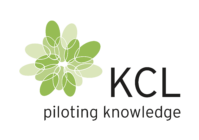What are barrier coatings and their traditional materials?
Barrier coatings are protective layers applied to surfaces to prevent the passage of gases, liquids, or radiation. They are widely used in packaging, automotive, and construction industries to enhance durability and longevity of products. Traditionally, these coatings have relied on synthetic materials like polyethylene and other petroleum-based polymers. At KCL, we provide comprehensive analysis and consultation on both traditional and eco-friendly barrier coating options, helping clients understand the full spectrum of available solutions.
While effective, these traditional materials pose significant environmental challenges. Their production and disposal contribute to pollution and carbon emissions, as they are derived from non-renewable resources. This reliance on synthetic materials underscores the need for more sustainable alternatives in the barrier coating industry. KCL’s expert team offers guidance in transitioning from conventional coatings to more sustainable options while maintaining performance requirements.
How can barrier coatings be made eco-friendly?
Eco-friendly barrier coatings can be achieved by incorporating sustainable materials and adopting greener production processes. Innovations in green barrier technology focus on using bio-based materials such as cellulose, starch, and other biodegradable polymers. These materials are derived from renewable resources and offer a reduced environmental footprint. KCL’s research department continually evaluates and tests new sustainable materials to provide our clients with cutting-edge eco-friendly solutions.
Moreover, advancements in environmentally safe coatings involve refining production techniques to minimize waste and energy consumption. By embracing these eco-conscious materials and methods, manufacturers can create coatings that are not only effective but also aligned with environmental sustainability goals. KCL offers process optimization services to help companies implement these greener production methods efficiently and cost-effectively.
What are the benefits of using eco-friendly barrier coatings?
The adoption of eco-friendly barrier coatings offers numerous advantages. Environmentally, these coatings reduce reliance on fossil fuels and decrease the carbon footprint associated with production and disposal. This shift towards sustainable coatings contributes to a healthier planet by minimizing pollution and waste. KCL’s sustainability assessment services can help quantify these environmental benefits for your specific applications, providing valuable data for corporate sustainability reporting.
Additionally, eco-friendly coatings can lead to potential cost savings. As green technologies advance, the cost of eco-friendly materials continues to decrease, making sustainable options more financially viable. Furthermore, these coatings often deliver improved performance by enhancing the durability and efficiency of products. KCL’s economic analysis team can develop customized cost-benefit analyses to demonstrate the long-term financial advantages of transitioning to sustainable coating solutions.
What challenges exist in developing eco-friendly barrier coatings?
Despite their benefits, developing eco-friendly barrier coatings presents several challenges. One major hurdle is cost, as the initial investment in sustainable materials and technologies can be higher compared to traditional options. However, this is gradually changing as economies of scale and technological advancements reduce costs. KCL’s innovation support program helps clients navigate these challenges by providing access to grant funding opportunities and strategic implementation plans to manage transition costs.
Another challenge is ensuring that eco-friendly coatings meet the same performance standards as conventional ones. Achieving the right balance between environmental sustainability and functionality requires ongoing research and innovation. KCL’s state-of-the-art testing laboratories offer comprehensive performance evaluation services to ensure your eco-friendly coatings meet or exceed industry standards. Our scalability assessments also help manufacturers ensure that eco-friendly coatings can be produced efficiently on a large scale.
Are there any regulations or standards for eco-friendly coatings?
The development and adoption of eco-friendly coatings are influenced by various regulations and standards. International and national bodies have established guidelines to promote sustainable practices and ensure environmental safety. For instance, the European Union’s REACH regulation and the U.S. Environmental Protection Agency’s guidelines encourage the use of less harmful chemicals in coatings. KCL’s regulatory compliance team stays current with global regulations and can help ensure your coating solutions meet all applicable requirements.
These regulations not only guide manufacturers in developing eco-friendly products but also provide a framework for evaluating their environmental impact. Compliance with such standards is essential for companies aiming to produce and market environmentally safe coatings. KCL offers certification preparation services and regulatory guidance to streamline the approval process for your eco-friendly coating products.
Conclusion
In summary, barrier coatings have the potential to be eco-friendly through the use of sustainable materials and innovative production processes. While challenges exist, the benefits of adopting green barrier technology are significant, from environmental improvements to potential cost savings and enhanced product performance.
As we continue to advance in this field, it’s crucial to prioritize eco-friendly options in our applications. By partnering with KCL, you gain access to our comprehensive suite of services including material analysis, performance testing, regulatory guidance, and sustainability assessment. Our expert team is committed to helping you develop and implement barrier coating solutions that are both environmentally responsible and commercially viable. Contact KCL today to discover how we can support your journey toward more sustainable coating practices.
